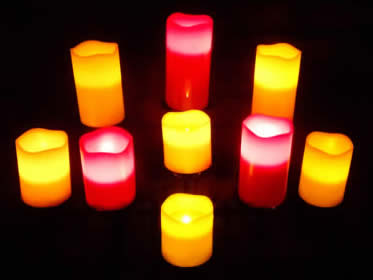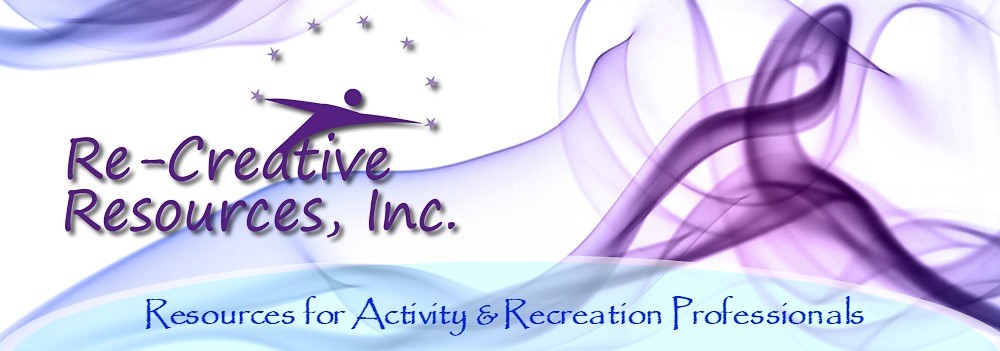 Sensory stimulation programs are one of the most common types of activities found in long-term care facilities. Simply stated, sensory stimulation is a technique that provides meaningful and common smells, movements, feels, sights, sounds, and tastes through the stimulation of all six senses. There are many benefits to providing sensory stimulation such as increased communication, environmental awareness, relaxation, cognitive stimulation, opportunity to build a rapport, enjoyment of a leisure experience, increased quality of life and much more. For a great sensory in-service, click here. Sensory stimulation programs are one of the most common types of activities found in long-term care facilities. Simply stated, sensory stimulation is a technique that provides meaningful and common smells, movements, feels, sights, sounds, and tastes through the stimulation of all six senses. There are many benefits to providing sensory stimulation such as increased communication, environmental awareness, relaxation, cognitive stimulation, opportunity to build a rapport, enjoyment of a leisure experience, increased quality of life and much more. For a great sensory in-service, click here.
Although many residents may benefit from sensory stimulation, the target audience most commonly includes individuals with moderate to severe cognitive impairment, those who demonstrate repetitive, self- actions, such as rubbing table trays or chairs, residents who demonstrate little or no response to external stimuli, and residents with impaired communication.
The planning phase is a very important part of success-oriented sensory stimulation programming. Identify which residents will benefit, assess their needs and interests, and plan accordingly. You may choose to offer a general sensory program which focuses on ALL the senses such as Discovering Your Senses, Sense-Abilities or the S.P.I.R.I.T. program (Sensory Program and Individualized Recreation Intervention and Techniques). Other programs may focus on a specific sense such as Picture Identification, Name That Sound, or Taste and See.
There are many methods to providing a quality therapeutic sensory program. Some tips include:
- Offer group or 1x1 sessions in the morning
- Offer the same time each day
- Offer in a quiet and comfortable setting
- Provide as tolerated
- No more than 8 residents for one staff
- Attempt to stimulate ALL of the senses or pertinent senses
- Create individualized sensory kits (send a letter to family members requesting items that would be most important and meaningful to the resident-contact Kim Grandal from Re-Creative Resources Inc. for a free sample letter)
- Create theme-related sensory kits such as the patriotic kit pictured
- Utilize a sensory planning form
What’s the sense? How do you know if it is working? Many recreation and activity professionals become frustrated and experience burnout because they feel that the residents are not responding to the techniques. It is very important to remember that even the smallest response is worth the effort. Facilitators should embrace every response and observe if the resident:
- Establishes/maintains eye contact/opens eyes
- Has the ability to track objects
- Responds to music by singing, clapping, tapping, or humming to music
- Demonstrates verbalization such as words, phrases or sentences
- Exhibits vocalization such as moans, nonsensical sounds, etc.
- Expresses laughter or sadness
- Displays various facial movement and expressions such as grimacing, smiling, sadness, tearfulness, licks lips, tongue movement, etc.
- Demonstrates focus or increased in attention span
- Awakens, stays awake, or is sleeping
- Decreases repetitive motions, agitation, yelling
- Consumes food/fluids
Documenting residents’ responses to sensory stimulation programs is another important task and should be written in progress notes and IDCP summaries. Utilizing a specialized sensory tracking form is recommended. In addition, care plan goals should be outcome based. Example: Mary will respond to olfactory stimulation by opening eyes and smiling 3x weekly during sensory sessions in 3 months.

The following are examples of sensory stimulation techniques, recommended equipment and precautions for all 6 senses: Olfactory, kinesthetic, tactile, visual, auditory and gustatory.
OLFACTORY (SMELL)
 Encourage residents to smell and identify the following: perfumes, colognes, potpourri, aromatherapy oils, popcorn, favorite foods, fresh baked bread or cookies, scented lotions, herbs and spices, flowers, coffee beans, mothballs, etc. Ask residents what the smell reminds them of. Recommended equipment: variety of scents, aroma fan/diffuser, cotton balls, swabs, etc. Precautions: aromatherapy oils are not to be used with residents with severe respiratory illness unless otherwise determined by physician; be aware of any allergies; do not apply aromatherapy directly on skin; some aromatherapy oils have contraindications-educate yourself! Encourage residents to smell and identify the following: perfumes, colognes, potpourri, aromatherapy oils, popcorn, favorite foods, fresh baked bread or cookies, scented lotions, herbs and spices, flowers, coffee beans, mothballs, etc. Ask residents what the smell reminds them of. Recommended equipment: variety of scents, aroma fan/diffuser, cotton balls, swabs, etc. Precautions: aromatherapy oils are not to be used with residents with severe respiratory illness unless otherwise determined by physician; be aware of any allergies; do not apply aromatherapy directly on skin; some aromatherapy oils have contraindications-educate yourself!
KINESTHETIC (MOVEMENT)
Encourage physical movement through music, turning pages of a book or magazine, familiar movements, squeezing foam, etc. Provide passive range of motion or hand over hand guidance as needed. Recommended equipment: egg shakers, exercise scarves, batons, pom poms, ribbons, rain sticks, etc. Precautions: know resident’s physical limitations; observe for shortness of breath overexertion and be cautious of residents with cardiac problems.
TACTILE (TOUCH)
Have residents feel the objects and ask them to identify the object. Ask simple questions: “Does this feel soft to you”. Utilize items that are soft, hard, bumpy, smooth, warm, cold, etc. Recommended equipment: manipulatives, variety of balls, stuffed animals, feathers, pat mats, textured objects, sandpaper, warm and cool water, ice cubes, brush, comb, common household objects. Precautions: Be aware of allergies, and be cautious of touching. Some residents may prefer to not be touched; others may experience pain when touched.
VISUAL (SIGHT)
 Use visually stimulating pictures that are simple, familiar and have contrasting colors. Use props when possible, in conjunction with pictures. Utilize verbal cues and ask simple, open-ended questions. Recommended equipment: mobiles, pictures, variety of props, reminiscent items, water panels/bubble towers, rope lights, light sprays, effect projector, nature videos, etc. Precautions: when utilizing blinking lights, moving pictures and projections, observe for overstimulation. In addition, some research shows that mirror balls may cause dizziness or nausea and facilitators should show great caution for individuals with epilepsy. When in doubt, discuss with nursing! Use visually stimulating pictures that are simple, familiar and have contrasting colors. Use props when possible, in conjunction with pictures. Utilize verbal cues and ask simple, open-ended questions. Recommended equipment: mobiles, pictures, variety of props, reminiscent items, water panels/bubble towers, rope lights, light sprays, effect projector, nature videos, etc. Precautions: when utilizing blinking lights, moving pictures and projections, observe for overstimulation. In addition, some research shows that mirror balls may cause dizziness or nausea and facilitators should show great caution for individuals with epilepsy. When in doubt, discuss with nursing!
AUDITORY (SOUND)
Utilize rhythmic music to stimulate and soothing music to calm. Recommended equipment: music tapes/CD’s, nature tapes, musical instruments, sound wave machines, bells, whistles, alarm clock, horns, party noise maker, minute timer, listen to seashells, talking books. Precautions: Monitor/alter the volume as needed and keep distractions to a minimum.
GUSTATORY (TASTE)
 Use a variety of foods that are in accordance with residents’ diets, flavored swabs or flavored lip balms may be used for residents who are NPO. Use foods that are flavorful such as: oranges, lemons, pudding, ice cream, mints, etc. As the resident if the food is salty, sweet, sour, smooth, etc. Match tastes: have the resident taste cherry Jell-O and match with a picture or point to a bowl of cherries. Precautions: offer foods that are in compliance with the resident’s diets and preferences and be cautious of allergies. Use a variety of foods that are in accordance with residents’ diets, flavored swabs or flavored lip balms may be used for residents who are NPO. Use foods that are flavorful such as: oranges, lemons, pudding, ice cream, mints, etc. As the resident if the food is salty, sweet, sour, smooth, etc. Match tastes: have the resident taste cherry Jell-O and match with a picture or point to a bowl of cherries. Precautions: offer foods that are in compliance with the resident’s diets and preferences and be cautious of allergies.
The most important aspect of sensory stimulation is the one-to-one interaction that is provided. It is a great way to provide meaningful activity and stimulation to those residents who are moderately or severely cognitively impaired and those who demonstrate little or no response to stimuli. With a little creativity, planning, perseverance, and empathy, activity professionals, recreation therapists, volunteers, family members, and other healthcare providers, can offer a success-oriented sensory stimulation program that will significantly enhance the quality of life of the residents!
|







